Let’s face it—whether you’re a middle schooler, high school student, or a Spanish teacher running on coffee and leftover Halloween candy, everybody loves food. That’s why teaching la comida is one of the best parts of the job! 🎉 It’s instantly relevant, connects to culture, and offers delicious opportunities to practice vocabulary in fun, meaningful ways. But sometimes students run into a Spanish word like guisantes and think, “What in the world does that mean?” That’s when they need extra input in context.
In this post, I’ve rounded up 10 awesome activities (plus extension ideas!) to spice up your food unit. Whether you’re just starting or deep into your unit on food and eating habits, these ideas will get your students engaged and using the target language. Buen provecho! 🍽️
1. Glyph Reading Activity: What Would You Eat?
This Spanish glyph activity combines reading comprehension, visual arts, and critical thinking. Students read clues in Spanish, color a glyph to represent their preferences, and answer comprehension questions. It’s an easy way to differentiate for students’ language level, while reinforcing Spanish food vocabulary like frutas y verduras.
Extension idea: Have students present their glyphs in small groups, practicing speaking and describing typical dishes they love.
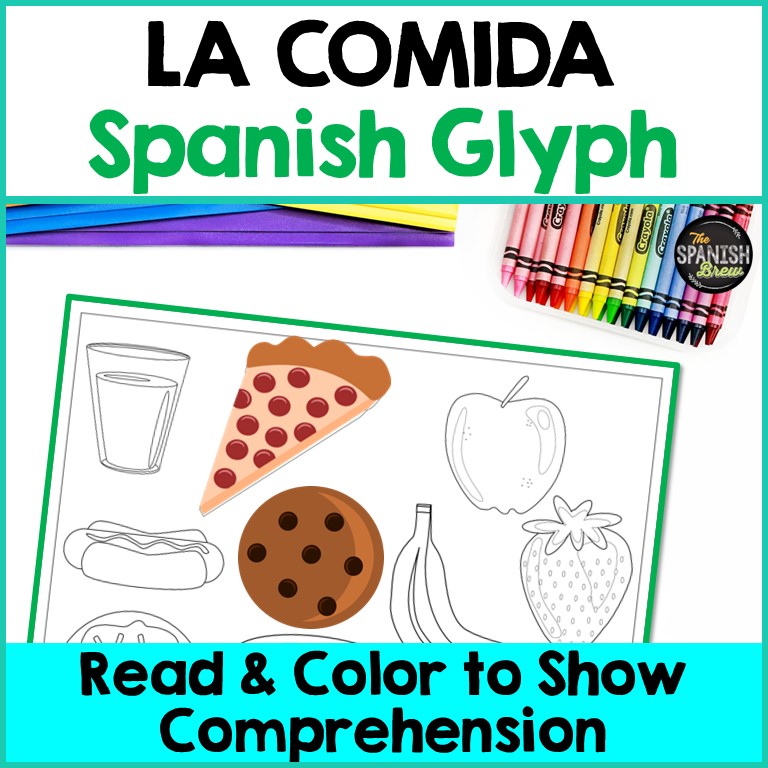


2. Short Story: The Breakfast Drama 🥞
This fun short story features a slice of bread looking for love, but struggling to connect with the other food groups. Along the way, students learn essential Spanish food terms and pick up new vocabulary.
Extension idea: Have students rewrite the story set in a different Spanish-speaking country with their own traditional foods.
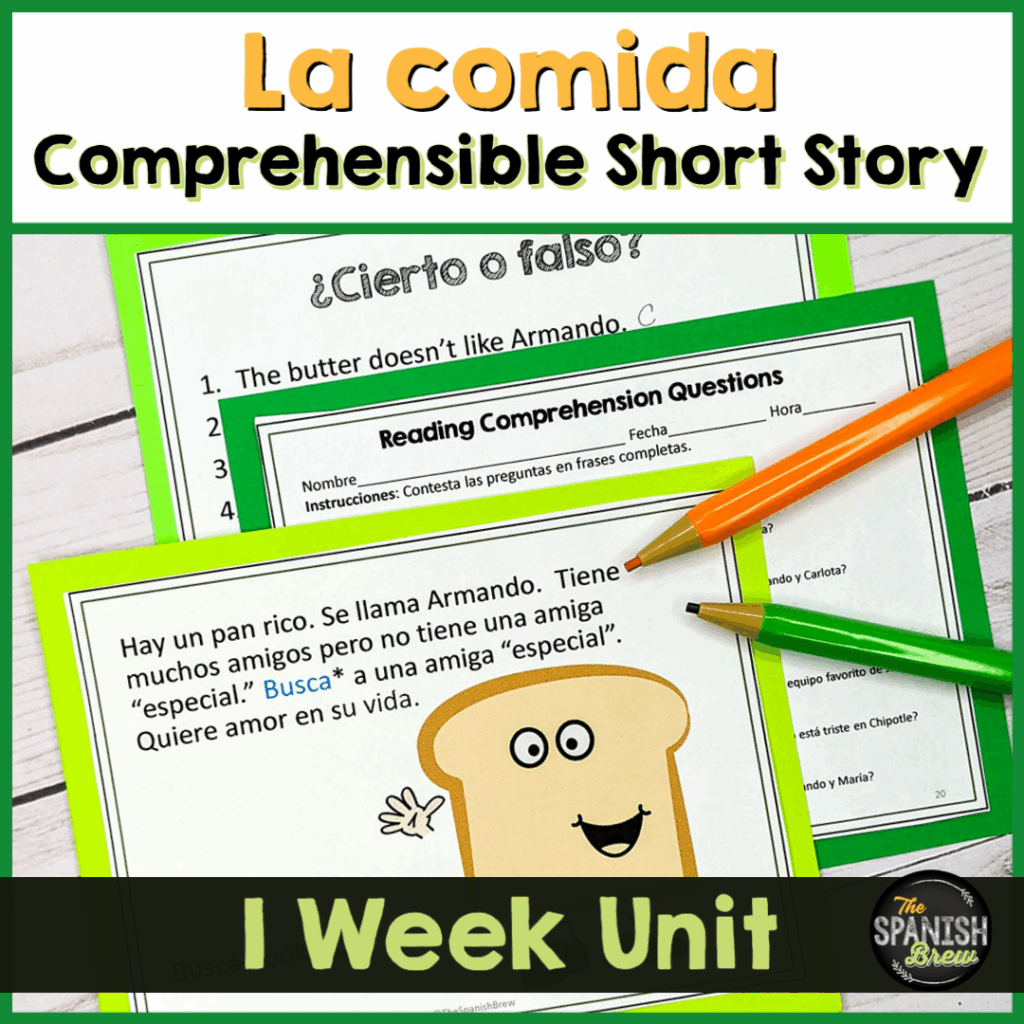


3. Restaurant Roleplay with Verbs Like Pedir and Servir
Let your students practice ordering food in a restaurant with these highly engaging activities! They’ll use the verbs pedir, servir, and traer while acting out conversations between customers and waiters. It’s the best part of combining grammar and speaking practice. Plus there are a variety of creative worksheets to get them writing using these high frequency verbs.
Extension idea: Set up a mock restaurant in your classroom. Bonus points for tablecloths, menus, and fake mustaches. 🎭

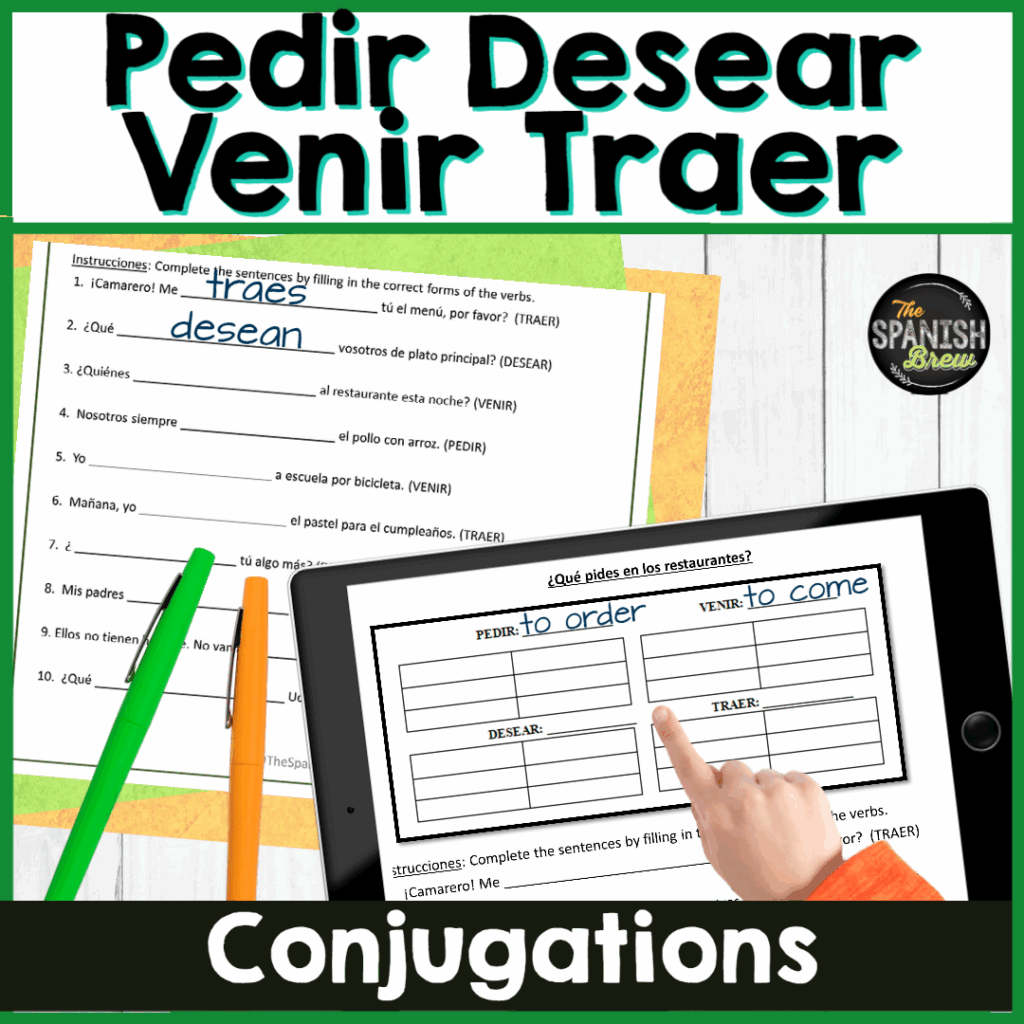
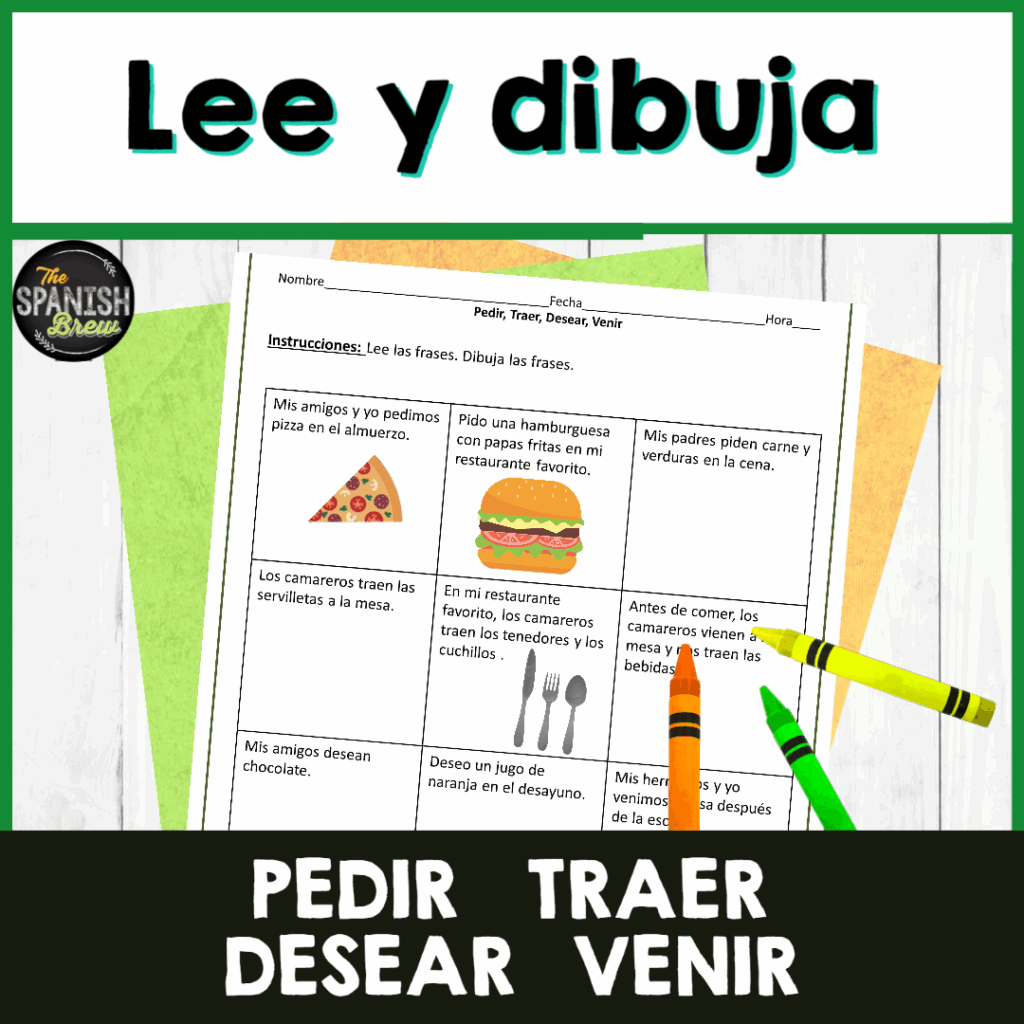
4. Spanish Task Cards for Speaking 💬
These printable task cards are a great resource for small groups or whole-class vocabulary practice. Each card prompts students to speak using Spanish food words and encourages them to use complete sentences. I absolutely love them because my students can work independently using the quiz-quiz-trade method with the cards. This includes cards targeted on breakfast, lunch, dinner, and restaurant vocabulary in Spanish.
Extension idea: Use them in a game of “speed dating”—students rotate and answer a card with each new partner. Or Post them on the walls around the room and let your students wander with a partner and chat.

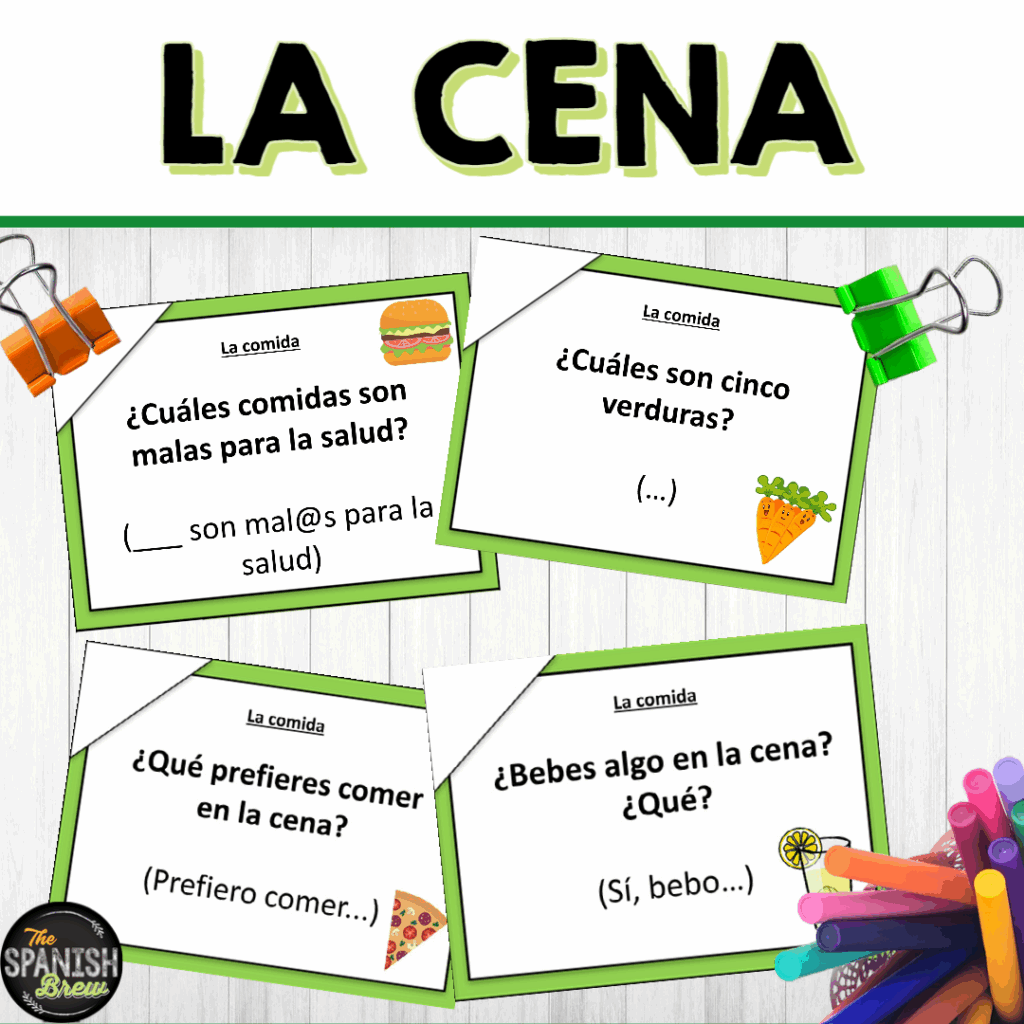
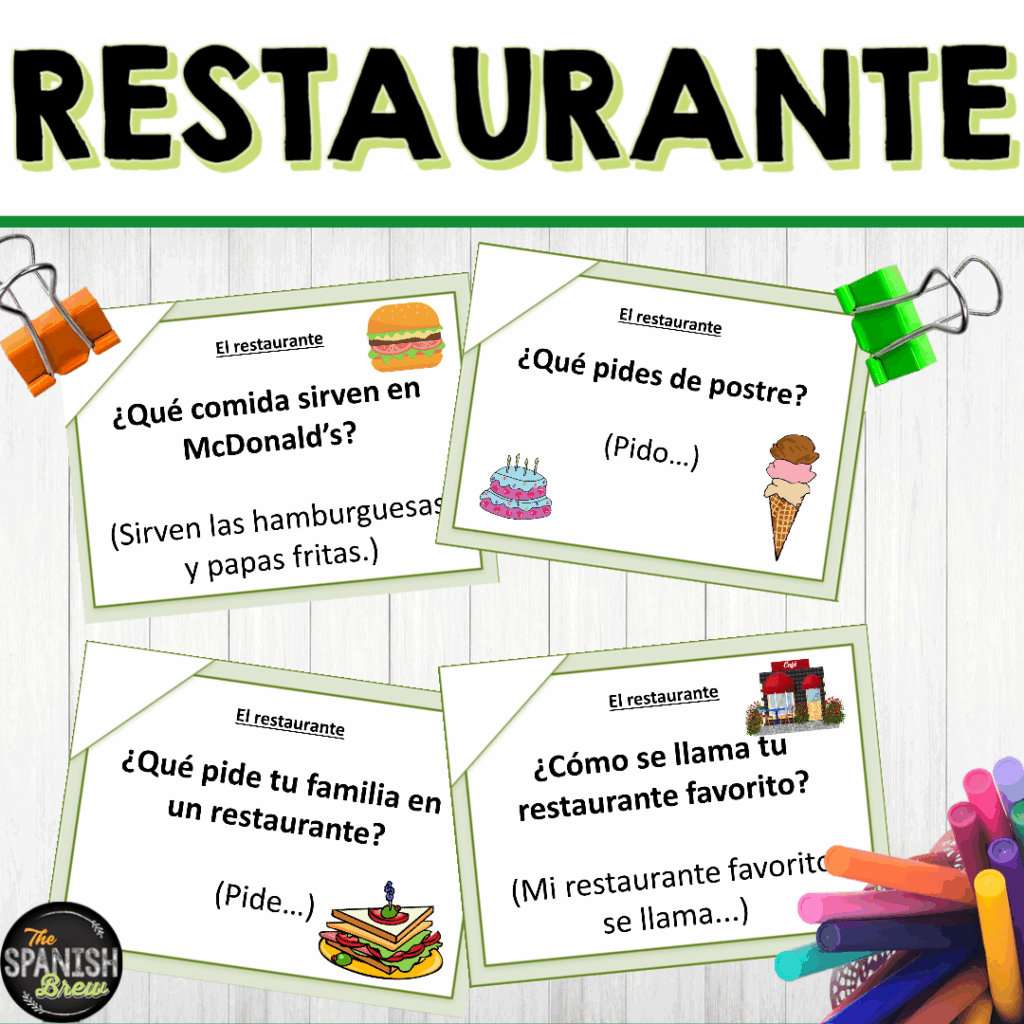

5. Reading Comprehension Passages on Food 🍎
Need a close reading activity that hits vocabulary, grammar, and culture? This reading comprehension pack is full of realistic passages about daily eating habits, food preferences, and cultural dishes in Latin American countries. This is a great way to introduce different foods while making cross cultural comparisons. and explore different types of food from Spanish-speaking countries.
Extension idea: Students compare eating habits in the U.S. and a Spanish-speaking country, then present findings in Spanish.
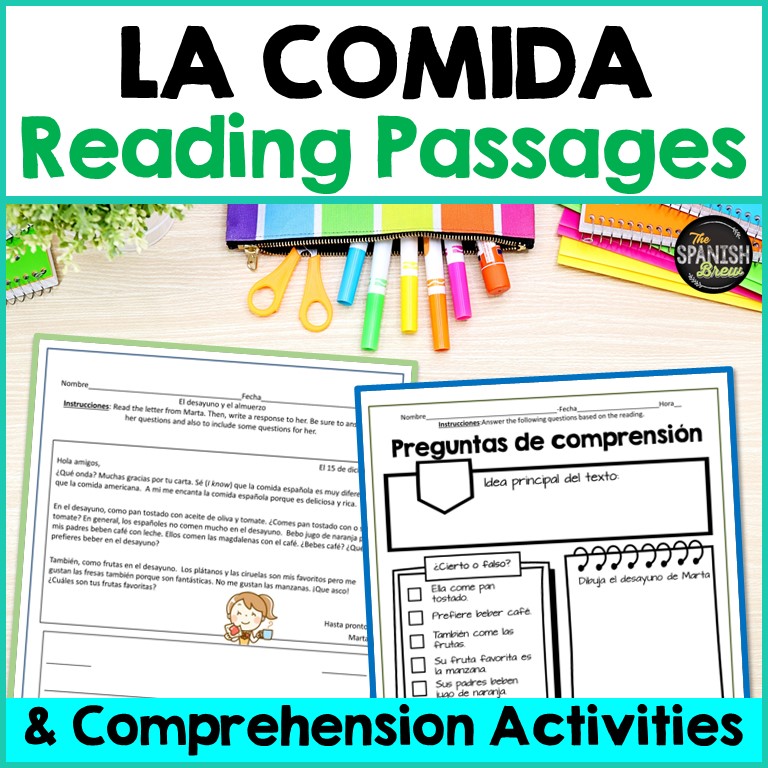

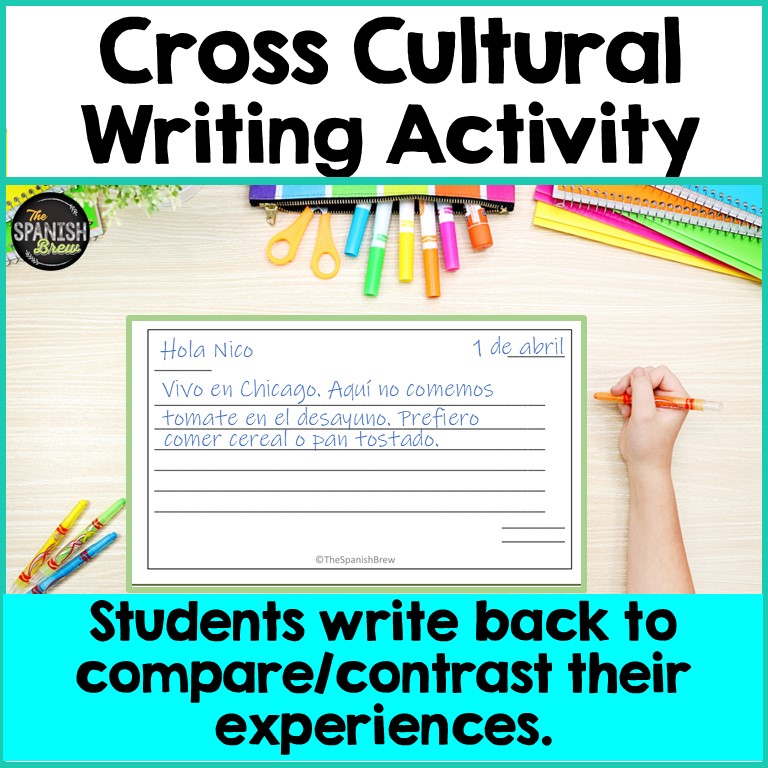
6. Another Short Story: La pizza hawaiana 🍽️
This funny short story details what happens to a piece of pizza looking for friendship. High frequency verbs are used in combination with vocabulary relating to food / la comida. This adorable short story reinforces Spanish food vocabulary and key verbs. It’s perfect for early finishers, homework, or a fun Friday activity.
Extension idea: Have students write a sequel or alternate ending using as many Spanish food words as possible.
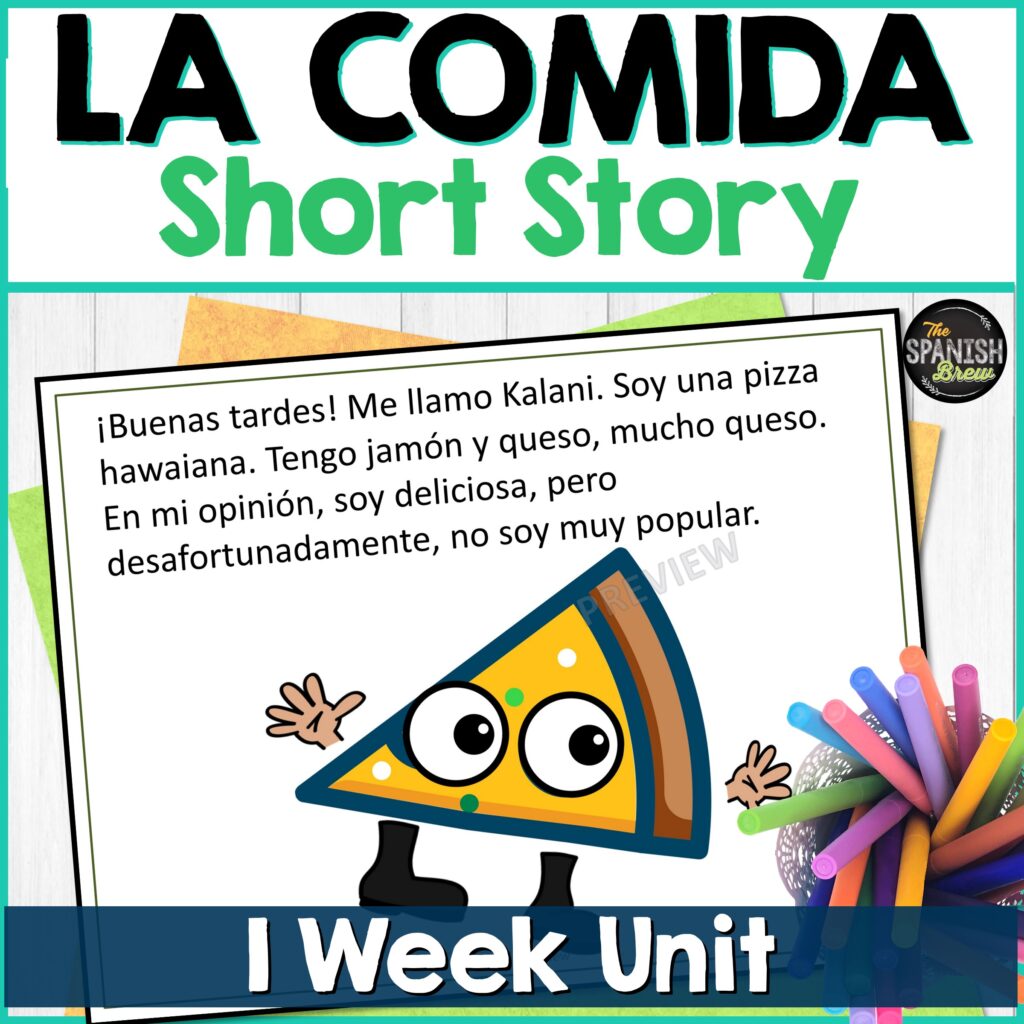
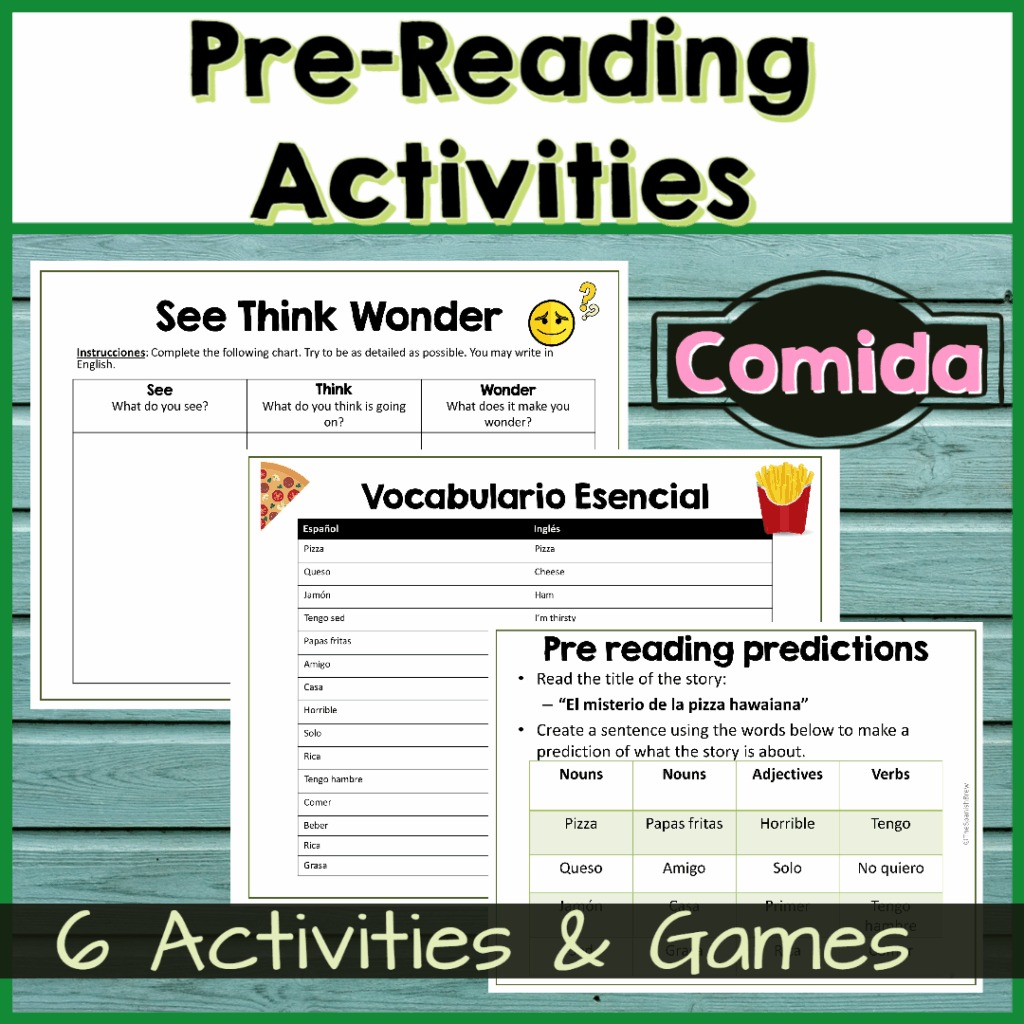

7. Picture Talk with High-Frequency Verbs
Using authentic visuals, this picture talk resource lets students describe a food truck scene using high-frequency verbs and essential food vocabulary. It’s a great way to build fluency through storytelling and visual prompts. And it comes with tons of questions for the teacher to make this a zero-prep Spanish activity.
Extension idea: Have students create their own food truck menu in Spanish, complete with prices and specialties from different Spanish-speaking countries.
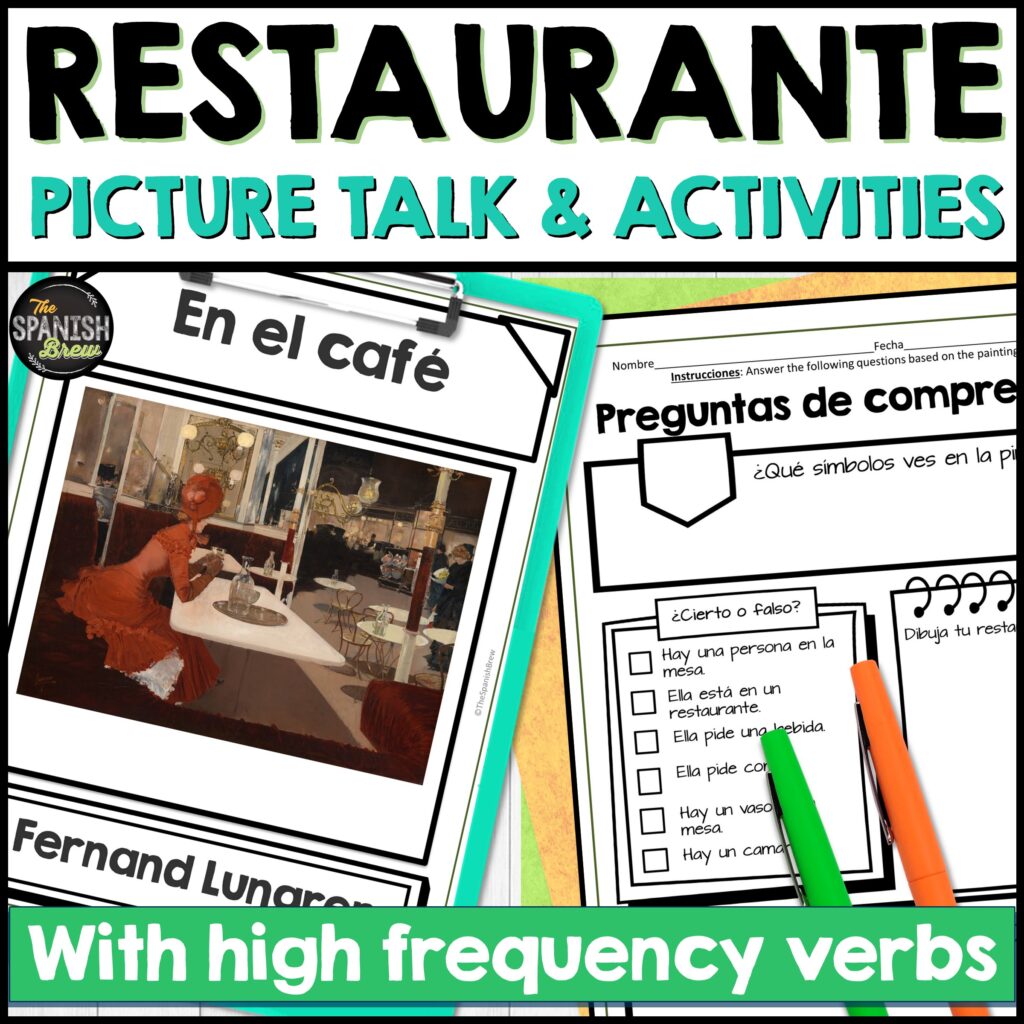


8. Ser + Food Worksheets
Yes, we still have to teach grammar. But let’s make it fun! This set of worksheets and reading comprehension activities uses the verb ser in the context of food descriptions. It’s a great addition to your lesson plans and offers meaningful practice.
Extension idea: Use the same sentence structures in a bingo game with food descriptions instead of calling out words.
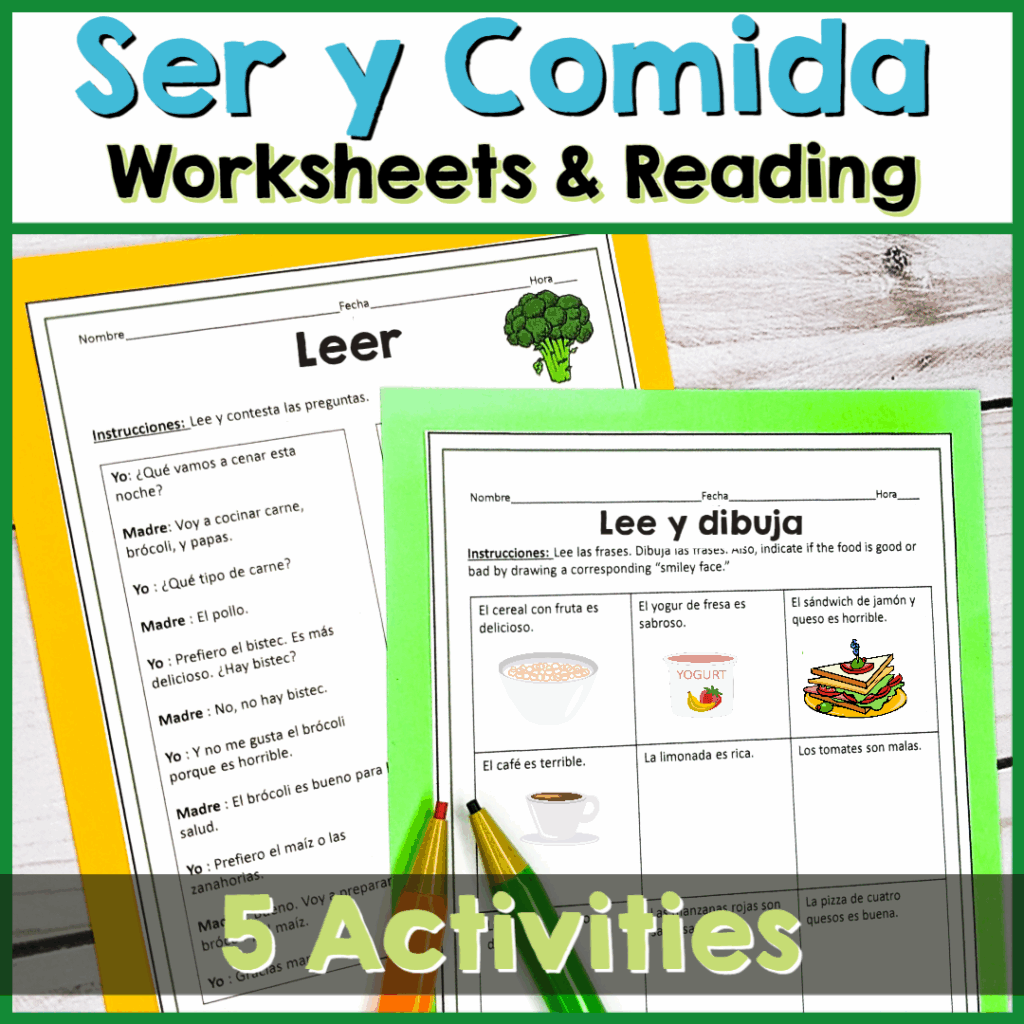

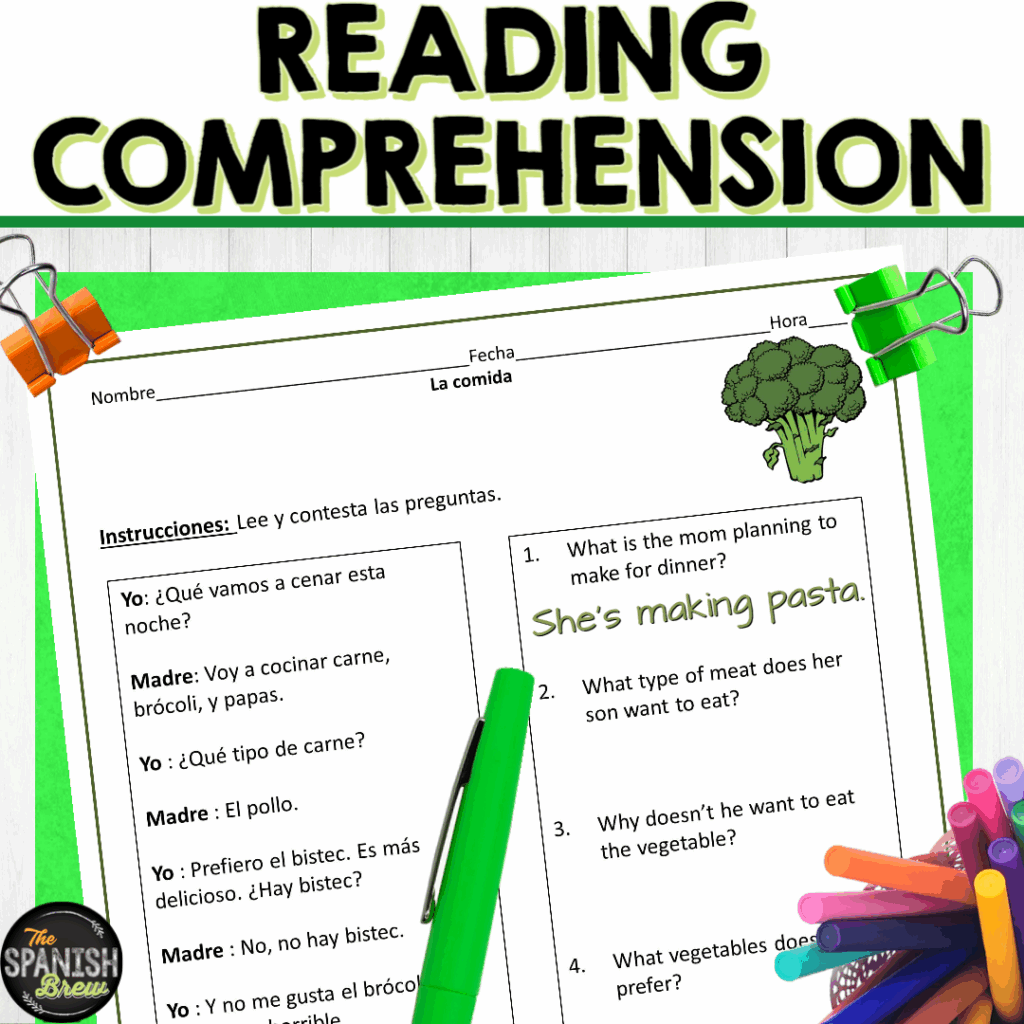
9. Printable Food Vocabulary Board Game 🎲
Students move around the board answering questions and defining Spanish food vocabulary in a circumlocution-style game. They’ll practice describing food items without saying them—kind of like “Catch Phrase” for Spanish learners. It’s one of those fun activities that makes language learning feel like a game (because it is). Your middle school and high school students will love getting competitive with their Spanish skills.
Extension idea: Assign roles like “English police” or “dictionary master” to add classroom management structure to game time.

10. Food Vocabulary + Circumlocution Game 🧠
This circumlocution game gets students using their brains and their Spanish. They describe food words without using the actual word (think: “It’s white. It’s cold. You eat it when you’re sad. It might be chocolate chip…” 🍦). Great for advanced language learners, or to stretch beginners with new Spanish vocabulary.
Extension idea: Create a classroom food chain with food-related vocabulary. Have students link food terms by categories (e.g., dairy products, sweet treats, main course, etc.).
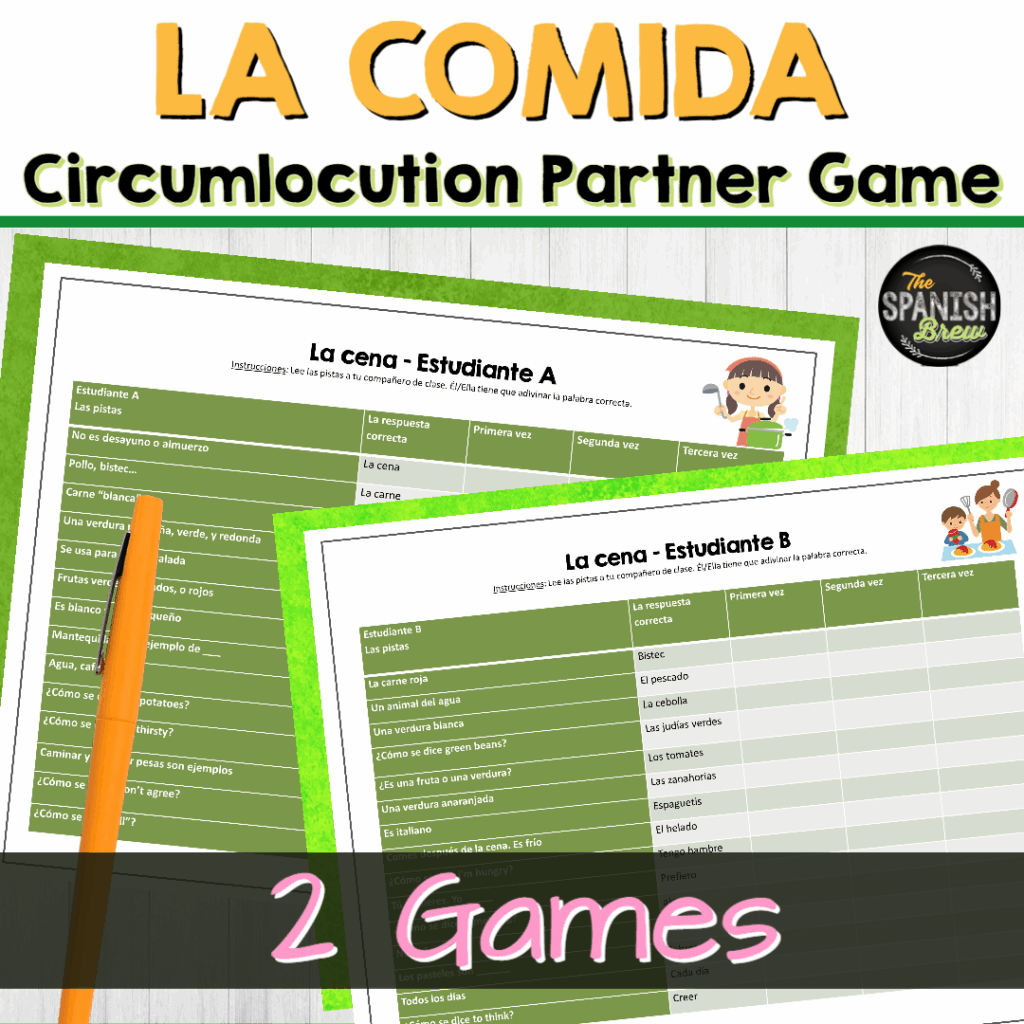
Wrap-Up: Bon Appétit or Should We Say Buen Provecho?
From printable games and short stories to task cards and interactive Spanish games, these activities are your secret sauce for teaching food in a way that sticks. Not only will your students learn common words and correct pronunciation, they’ll also explore Spanish culture and daily life in Spanish-speaking countries.
So whether you’re a new teacher looking for your first steps into the Spanish classroom, or a seasoned pro planning next week’s substitute plans, these resources will help keep things fresh, fun, and flavorful.
Hungry for more? 😉 Subscribe to the blog or check out my related posts below for even more ideas!
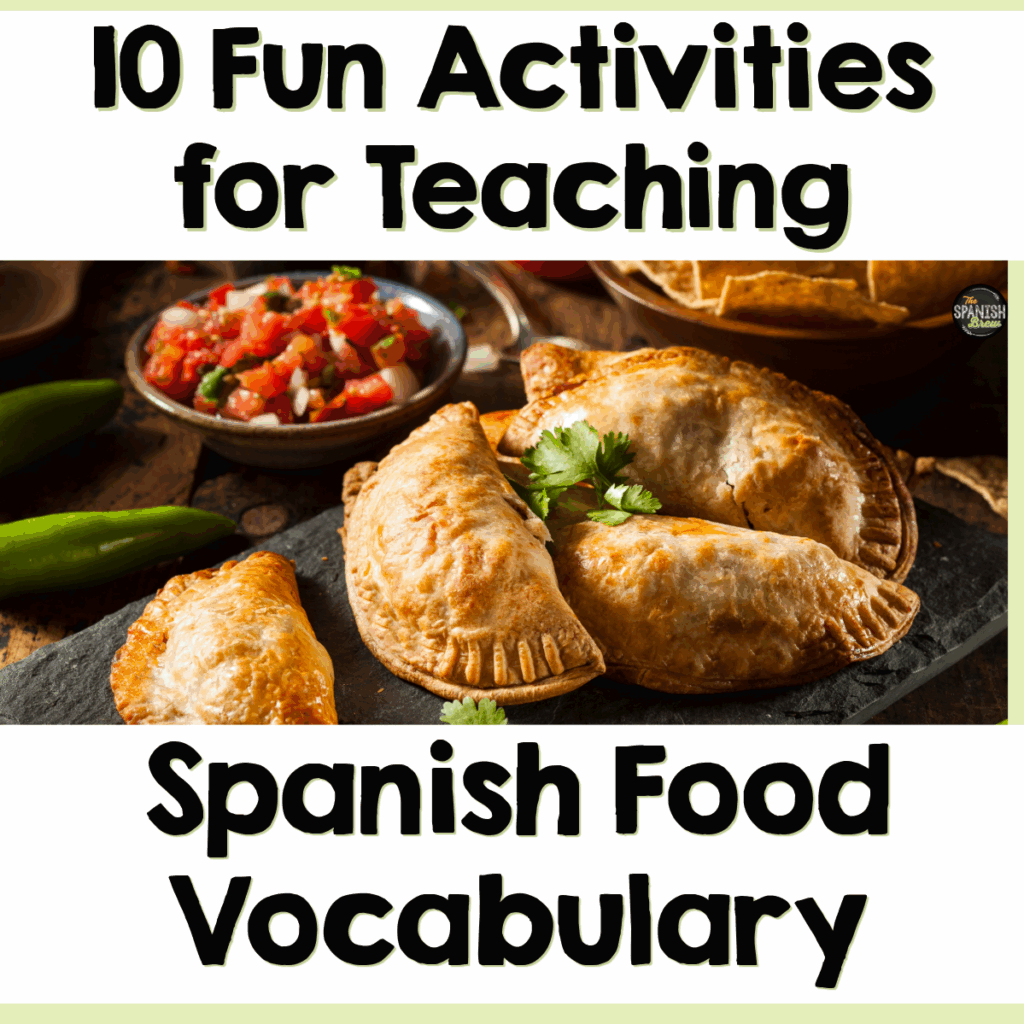
Related Posts:
Spanish Class Activities for the 3 Days Before Thanksgiving
4 Amazing Activities to Extend Picture Talk & Reduce Lesson Planning

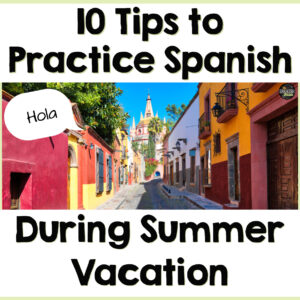


No Comments